Gonatopsis borealis
Tsunemi KuboderaGonatopsis borealis: Holotype (23 cm ML) collected off eastern coast of Hokkaido, Japan. Drawing from Sasaki (1923).
Introduction
Gonatopsis borealis was described by Sasaki (1923) based on 8 specimens (140-255 mm ML) donated by Mr. G. Yamaguchi. Most of the specimens were caught on 28 July 1922, 15-30 miles off Kushiro, Hokkaido, Japan. Although Sasaki did not designated type specimens nor provide accurate measurements, his careful description and drawing are enough to specify this species is valid.
Various authors have reported the presence of 3 distinct morphs of G. borealis, namely: large, small and slender. The morphological and molecular status of these morphs have not been critically reviewed.
Based on differences in the number of teeth in the radula Nesis (1971) erected a new subgenus, Boreoteuthis, for G. borealis to separate it from other species in the genus Gonatopsis. Several subsequent authors have elevated this name to genus status (see Katugin, 2004). The issue of generic placement has not been resolved for borealis.
Diagnosis
A Gonatopsis with ...
- 7 radular teeth per transverse row.
- short arms; distal tips not attenuated
- with suckers in 4 rows near arm tips.
- muscular mantle.
Characteristics
Arms-
- Arms stout, moderately long; length ca. 40-45% ML.
- Arms subequal; arm formula: II=III>I>IV.
- Aboral keels distinct and unusually strongly developed on arms III (see title photograph).
- Armature in 4 rows (quadriserial) in mid-region of all arms.
- Mid-region of arms I-III with 2 rows of medial hooks in mid-region (39-48 per arm); arms IV with 2 medial rows of suckers.
- Proximal region of arms with 5-10 suckers.
- Distal region of arms with 4 rows of suckers; total sucker counts ca. 56-63 per arm.
- Arm suckers with ca. 12-15 pointed teeth on distal half of inner rings, often grading to small knobs on proximal margins.
- Hectocotylized arms not present.
 Click on an image to view larger version & data in a new window
Click on an image to view larger version & data in a new window
Figure. Arm armature of G. borealis, 200 mm ML, off Southern California. All suckers maintain relative sizes; hook one half size relative to suckers. Arm III (left to right) - Largest hook; largest marginal sucker, medial sucker from arm tip, marginal sucker from arm tip. Arm IV (left to right) - Largest medial sucker; largest marginal sucker. Suckers are inner rings only. Drawings from Young (1972).
- Tentacles
- Tentacles absent beyond paralarval stage (above 8-10 mm ML).
- Tentacles absent beyond paralarval stage (above 8-10 mm ML).
- Head
- Eyes very large.
- Occipital crest with 4 distinct longitudinal folds.
- Buccal membrane with 7 lappets; suckers absent.
- Beaks. Descriptions can be found here: Lower beak, upper beak. See also this site.
- Radula with 7 teeth per transverse row; rachidian tricuspid; 1st lateral bicuspid.
- Funnel
- Funnel valve present.
- Funnel organ V-shaped with short anterior papilla; 2 large, oval-shaped ventral pads also present.
- Funnel cartilage lanceolate with single long straight groove.
- Nuchal cartilage large, panduriform, constricted in middle.
- Mantle cartilage straight, ridge-like.
- Mantle
- Mantle wall very thick and muscular.
- Mantle cylindrical; tapered posteriorly at level of anterior fins to blunt point.
- Skin pigmentation dark reddish or purplish brown.
- Maximum lengths of mature males, 27 cm ML; mature females, 33 cm ML.
- Fins and tail
- Fins short (length over 40% ML); broad (ca. 65-70% ML).
- Fin shape rhombic; with sharp lateral angles, tapered posteriorly to broadly rounded apex.
- Tail absent.
- Photophores
- Photophores absent.
- Photophores absent.
- Gladius
- Gladius shape penniform; length 11 times width.
- Viscera
- Gills with ?? lamellae per outer demibranch.
- Mature eggs not described.
- Spermatophores not described.
- Measurements and counts (taken from Young, 1972).
Character/catalog no. 000000 60897 000000 Institution USNM SBMNH SBMNH Velero station 10402 10401 8697 Sex male male male Maturity ML 200 257
240
MW 44 60 61 HW 41 -- 49 FL 85 110 107 FW 137 164 155 AL 1 99 101 104 2 108 113 110 3 107 110 113 4 88 99 93 Arm formula 2=3>1>4 2=3>1=4 3=2>1>4 Hook counts (max) 1 40 42 45 2 40 44 48 3 39 44 47 Sucker counts
4 Depth (m) 925 1845 3695
Comments
Information on characters listed above taken from Young (1972). The characters are based on animals from southern California that appear to represent the "large morph" mentioned by a number of authors.
Life History
Paralarvae can be identified by the dorsal-head chromatophore pattern which is Type II (three transverse rows of chromatophores with one chromatophore in the anterior row, two in the middle row and three in the posterior row); the mantle has 6-10 dorsal chromatophores (Jorgensen, 2006).
Distribution
Type locality: Western North Pacific Ocean, Japan, eastern Hokkaido Island, 15-30 miles off Kushiro; depth of capture not indicated.
References
Jorgensen, E. M. 2007. Identification, distribution and relative abundance of paralarval gonatid squids (Cephalopoda: Oegopsida: Gonatidae)from the Gulf of Alaska, 2001-2003. Journ. Molluscan Studies, 73: 155-165.
Katugin, O.N. 2004. Squids of the family Gonatidae from the North Pacific Ocean and their genetic differentiation: controversial issues in the systematics and phylogeny. Ruthenica, 14(1): 73-87. [In Russian, English summary].
Nesis, K.N. 1971. The family Gonatidae - abundant squids of the North Pacific (their distribution, ecology, systematics and phylogeny), Pp. 63-65. In: Fourth Meeting of the Investigation of Molluscs: Molluscs Trends, Methods and Some Results of Their Distribution. Moscow: Academy of Sciences USSR Zoological Institute. [Abstract; in Russian].
Okutani, T., T. Kubodera and K. Jefferts. 1983. Diversity, distribution and ecology of gonatid squids in the subarctic Pacific: A review. Bulletin of the Ocean Research Institute, University of Tokyo, No. 26(1): 150-192.
Sasaki, M. 1923. On a new eight-armed squid from Hokkaido, Gonatopsis borealis n. sp. Annotationes Zoologicae Japonenses, 10: 203-207.
Sasaki, M. 1929. A Monograph of the Dibranchiate Cephalopods of the Japanese and Adjacent Waters. Journal of the College of Agriculture, Hokkaido Imperial University, 20(Supplement 10): 1-357.
Young, R.E. 1972. The systematics and areal distribution of pelagic cephalopods from the seas off southern California. Smithsonian Contributions to Zoology, 97: 1-159.
Title Illustrations

| Scientific Name | Gonatopsis borealis |
|---|---|
| Location | Northeast Pacific off Monterey, California, U.S.A., at 36.7°N, 122.05°W |
| Comments | In situ photograph of Gonatopsis borealis taken at a depth of 366 m (daytime). Note the well developed keels on Arms III and the lack of tentacles. |
| Acknowledgements | Image courtesy of the Monterey Bay Aquarium Research Institute (MBARI). You must obtain permission from MBARI to use this photo; please contact pressroom@mbari.org for further information. |
| Specimen Condition | Live Specimen |
| Identified By | R. E. Young |
| View | Dorsal |
| Copyright | © 2013 MBARI |
About This Page

National Science Museum, Tokyo, Japan
Correspondence regarding this page should be directed to Tsunemi Kubodera at
Page copyright © 2015
 Page: Tree of Life
Gonatopsis borealis .
Authored by
Tsunemi Kubodera.
The TEXT of this page is licensed under the
Creative Commons Attribution-NonCommercial License - Version 3.0. Note that images and other media
featured on this page are each governed by their own license, and they may or may not be available
for reuse. Click on an image or a media link to access the media data window, which provides the
relevant licensing information. For the general terms and conditions of ToL material reuse and
redistribution, please see the Tree of Life Copyright
Policies.
Page: Tree of Life
Gonatopsis borealis .
Authored by
Tsunemi Kubodera.
The TEXT of this page is licensed under the
Creative Commons Attribution-NonCommercial License - Version 3.0. Note that images and other media
featured on this page are each governed by their own license, and they may or may not be available
for reuse. Click on an image or a media link to access the media data window, which provides the
relevant licensing information. For the general terms and conditions of ToL material reuse and
redistribution, please see the Tree of Life Copyright
Policies.
- First online 30 May 2006
- Content changed 11 October 2015
Citing this page:
Kubodera, Tsunemi. 2015. Gonatopsis borealis . Version 11 October 2015. http://tolweb.org/Gonatopsis_borealis/26876/2015.10.11 in The Tree of Life Web Project, http://tolweb.org/





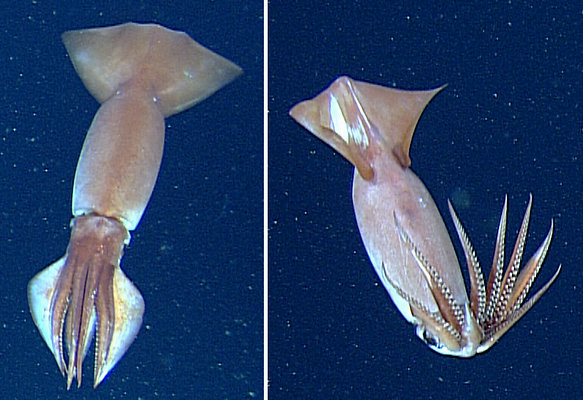
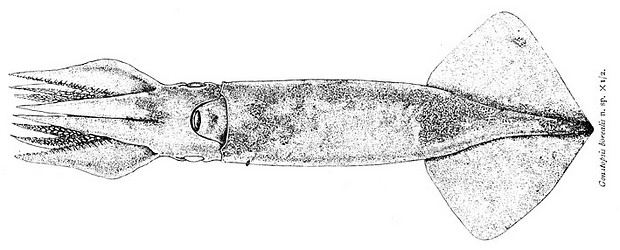
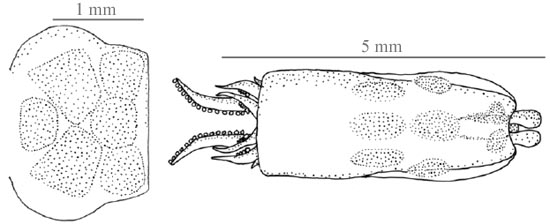
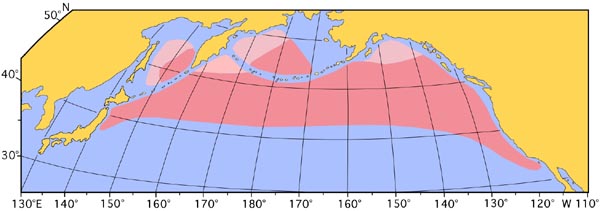
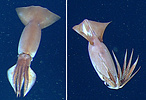


 Go to quick links
Go to quick search
Go to navigation for this section of the ToL site
Go to detailed links for the ToL site
Go to quick links
Go to quick search
Go to navigation for this section of the ToL site
Go to detailed links for the ToL site